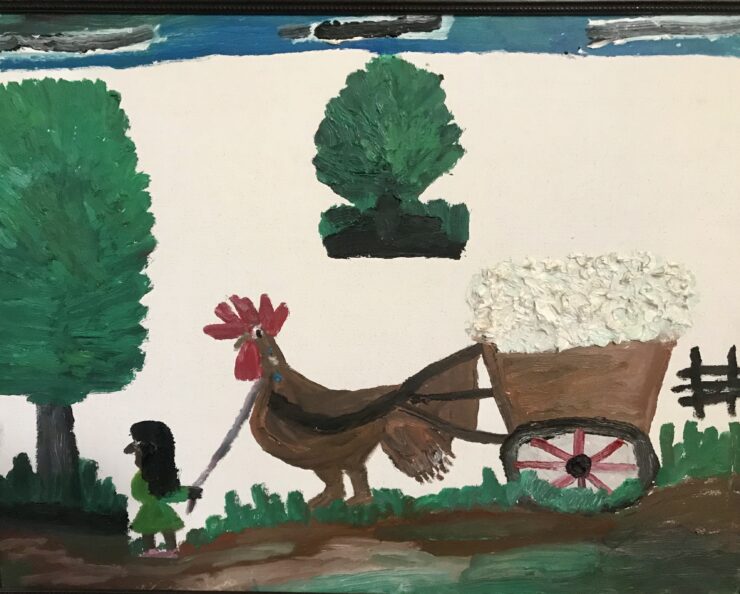The tables and chairs started dancing. Almost.
I was sitting in the Cane River Commissary in Bermuda, Louisiana – a roof-only pole-building, perched along the Cane River – for brunch. The air had that fragrant, tingly edge just before warmth turns humid.
The music of Gerard Delafose & The Zydeco Gators hit a place in the brain you had to consciously resist if you wanted to stay seated. The band was anchored by a frottoir (washboard) player and a squeezeboxer. The vocals slid between English and French: a Cajun patois well-designed for love, laughter, and knife fights.
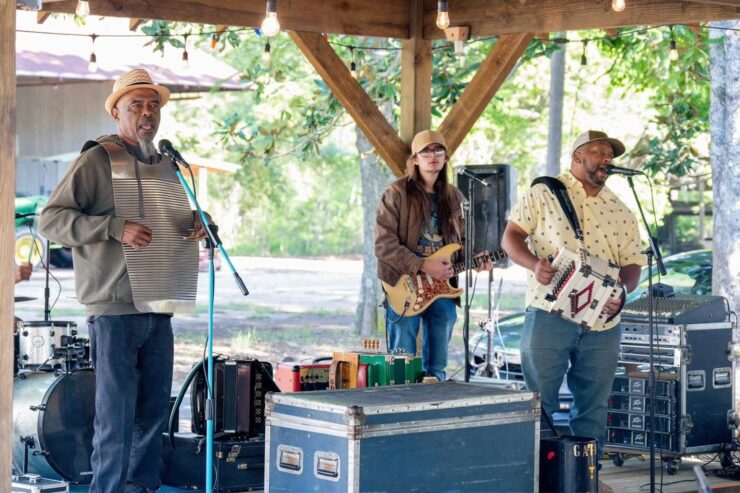
Beyond Glee
There was a feeling greater than glee: exultation. Some good ol’ boys and gals swung out, snapped in, and whirled under each other’s arms so seamlessly I wondered if they practiced at home. Some beamed and laughed. Some, such was their love, clasped one another. Some stared into the distance, expressionless, as though elsewhere.
One woman – cigarette in one hand, beer in the other – danced in the parking lot. Her biblically bearded partner doggy-paddled in the dust beside her. At one point, everyone inexplicably broke into solo dance, moving in sync like a flash mob. A visitor, I contributed to the contagion by wagging my head. One of the songs, famous I was told, was Don’t Mess with my Toot Toot (translation: Sweetheart), a term I may well inflict on my wife. But maybe not.
I drank a Blood Orange Mimosa, a fine ambassador for flavored sparklers, and ate spicy fried chicken over waffles and berries glazed with pecan syrup – laudable local fare. The menu was heavy on Cajun: shrimp & grits, meat pies, beignets – the exact opposite of spa food.
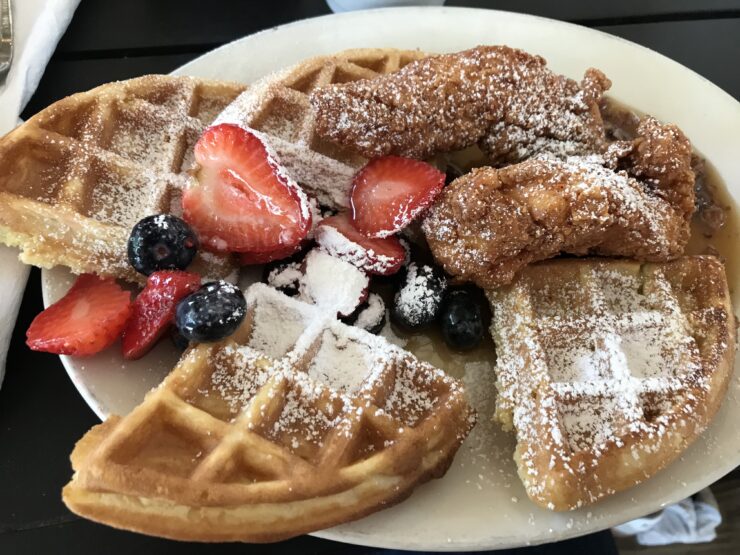
© David Greenberg
Menu extras, in true local fashion, were called lagniappes. It was the best ninety minutes I’d ever traded for a meal.
Restless Ghosts on the Cane River
The tone shifted as I followed the Cane River south, through an atmosphere thick with restless ghosts – Natchitoches Indians, Spanish conquistadors, French traders, Union and Confederate soldiers, slaves – to Melrose Plantation.
Several live oaks, one 300 years old, improbably brawny, gnarled, and majestic, rose from its lawns. The air was a complex perfume of oak tree, grass lawn, and river.
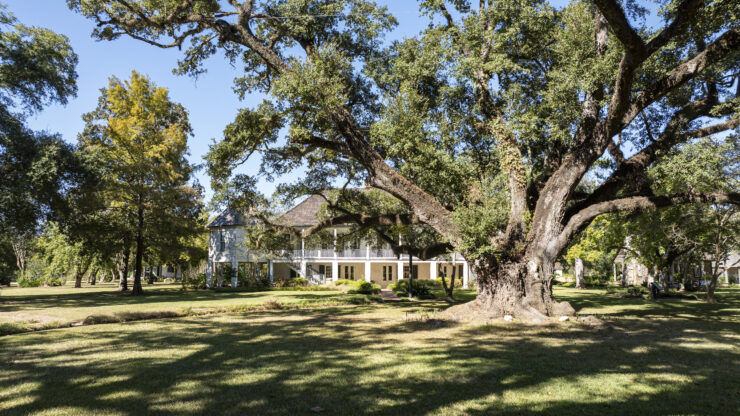
©Natchitoches Convention and Visitors Bureau
Melrose was started by an enslaved woman married to a white Frenchman – himself a slave-owner – a scandalous union in its time. Their ten multiracial children were known, in the parlance of the time, as Creole.
The only plantation in the area spared by the Union army from destruction, it evolved into an artist’s colony in the late 1800s.
You can still see the art of Clementine Hunter here. Originally a field hand, she began painting here at age 53 using discarded art supplies. She quickly blossomed into one of America’s great self-taught folk artists. She painted people she liked large. Those she disliked small.

The Gators
The Cane River was frothing with alligators. This isn’t true. One alligator was spotted, which I didn’t see. But it expresses my fear, and I was careful not to dangle my fingers – dainty lagniappes for alligators – over the side of the Cane River Queen paddlewheeler.
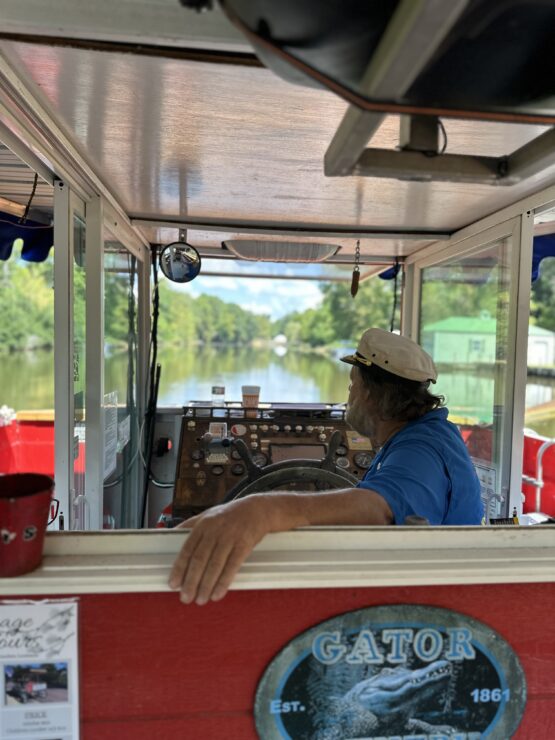
They still call it a river because that’s what it once was, though a dam turned it into a long, narrow lake years ago. Along the banks, I saw an egret dressed in a white tuxedo, a blue heron atop a fence – the runway model of birds.
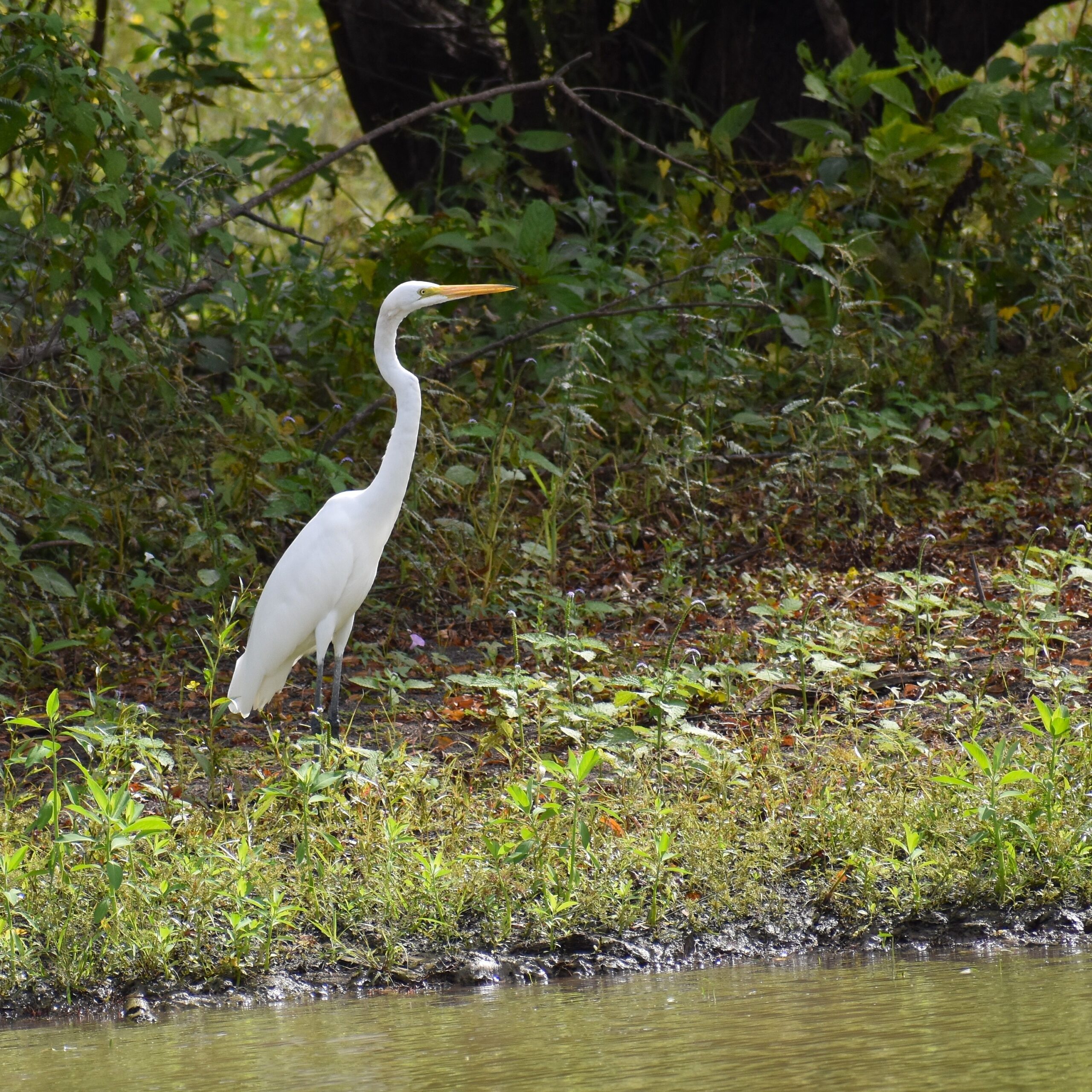
The Historic District of Natchitoches
My hotel, Church Street Inn, was only blocks from the gangway. High-ceiled, wood floored, handsomely tiled, my wife would cat-whisker it and purr. It’s within the Historic District of Natchitoches (established 1714), the oldest settlement in the Louisiana Purchase (which spans fifteen times the area of Louisiana, the state).
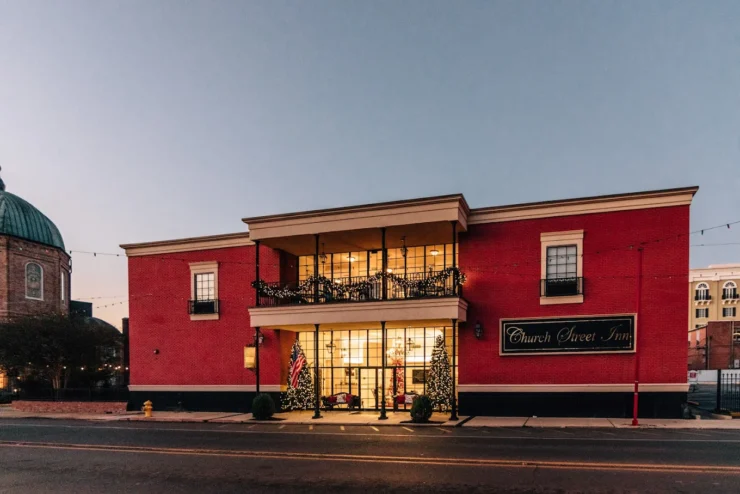
I joined other folks affably sauntering its sidewalks, poking into stores. Susceptible to cooking gear, I particularly enjoyed Cane River Kitchenware. If I had to choose one food to die by, it would be their pralines. Kaffie-Frederick General Mercantile, started during the Civil War, still sells all things from horseshoes to hats. They preserve its charming early-day look.
Waxy-leafed magnolia trees lit the residential streets with their lavish blooms and scent. Many homes had balconies – remnants of plantation architecture.
I heard many “y’alls.” Never before have I heard myself referred to so often as “Sir.”
Tastes Like Chicken
Mayeux’s Steak & Seafood served an appetizer of blackened alligator nuggets. Yes, it tasted like chicken, but its texture – like earlobes – gave pause. I’ve never eaten earlobes, but the linkage was self-evident. Their Redfish Cocodrie was battered, sautéed, sauced, and bestrewn with lump crab and wild shrimp – everything I hoped for in local cuisine.

©Natchitoches Convention and Visitors Bureau
Fort St. Jean Baptiste State Historic Site
Nearby, like a ghost resolidified, a replica of Fort St. Jean Baptiste – the 1716 trading post – stood beside the Cane, with a small museum alongside. Acorns and black walnut pods (which stain your fingers if you touch them) littered the ground. Its perimeter wall was built from individual upright logs, the top of each sharpened to a point so they looked like unpainted pencils – perilous to climb over.

In those days, distance was measured by pistol-shot – about 50 yards. The fort stretched roughly a pistol-shot each direction. Within the enclosure, the church and the jail were physically close to one another, siblings, Prayer and Punishment.
The museum had a pamphlet entitled “HARMFUL Animals and Plants.” Here I learned that alligators are the least of my worries hereabouts: venomous snakes, spiders and catfish (many with a venomous spine) are also worthy of my neurosis.
Past and present here are like two stratified liquids – sloshing, penetrating, separating as they meet. Sometimes even dissolving into one another. This is not an area or people that have been pasteurized by time. The passionate, eccentric, brutal tectonics of history are but a pistol-shot away, still embossing the present. Its ghosts can still grab you – its fault lines can yet trip you. Capsaicin tinges its being.
As much as this is a place to relax in the kind, reflexive hospitality of its residents, it is a place to reflect on their history – and one’s own… y’all.
If You Go
- It is an hour’s drive to the closest airport in Shreveport.
- You can find out much more about Natchitoches at natchitoches.com.
You might also enjoy:
- Seven Things Every Visitor to Lafayette, Louisiana Should Know
- Visit Vermillionville, Louisiana, the Cradle of Cajun Culture
Thanks to the Natchitoches Convention and Visitors Bureau for hosting my visit.
Featured Image: Folk art by Clementine Hunter, displayed in Melrose Plantation, Louisiana.
You can see more of David Greenberg’s travel articles at https://www.ardentgourmet.com/published-magazine-articles

